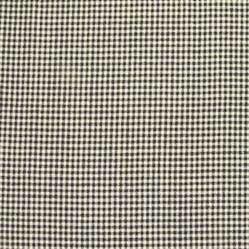Border tartan, sometimes known as Northumbrian tartan, Shepherds’ Plaid or Border Drab, or Border check is a design used in woven fabrics historically associated with the Anglo-Scottish Border, including the Scottish Borders and Northumbria. Possibly the most identifiable Border tartan garment of the region is the maud (plaid), made popular from the 1820s by fashionable Border Scots such as Walter Scott, James Hogg, Henry Scott Riddell and Robbie Burns.
The modern Border tartan is a crossweave of small dark and light checks, much plainer than the better-known Scottish tartans.
Traditionally, the yarn for the light squares was simply untreated sheep’s wool and the darker yarn was the same wool dyed with simple vegetable dyes, such as alder bark or water flag, or the untreated wool of a black sheep.
Modern Border Tartans are almost invariably a bold black and white check, but historically the light squares were the yellowish colour of untreated wool, with the dark squares any of a range of dark grays, blues, greens or browns; hence the alternative name of “Border Drab.” At a distance the checks blend together making the fabric ideal camouflage for stalking game. This style of tartan is one of the oldest in existence as fragments of similar tartans have been found in Great Britain and Jutland.
One similar fragment was discovered in an earthenware pot filled with silver coins, at the Antonine Wallin Falkirk, Scotland (giving it the name Falkirk Sett). This fragment, known as the Falkirk tartan is currently the earliest check or tartan fragment found in the British Isles and dates back to Roman times (around the 3rd century CE).
It is now kept in the National Museum of Scotland. The Celts were said by Roman scholars to wear bright stripes, that some have suggested are actually descriptions of the brighter variants of tartan. Another similar tartan was found on a cloak, in the peat bog at Thorsberg, in the modern-day Schleswig-Holstein region of northern Germany.
In Anglo-Saxon England, though check was commonly used, its use in Schleswig is thought to have been greater (even as far as being used for tunics, unlike in England where tunics were usually plain hues, with cloaks and trouser being the most common check garments), suggesting that the continental Germanic peoples of the area used the design to an even greater extent than those in England.
Border tartan is possibly the easiest tartan to create due to its use of natural colours and undyed wool.
From this general check pattern came the Houndstooth variant, first developed in Lowland Scotland. This check now famous for being used as the design for traditional Chefs’ trousers, where the camouflage pattern is used to hide minor stains.
Ancient Border Tartan pictured below:

